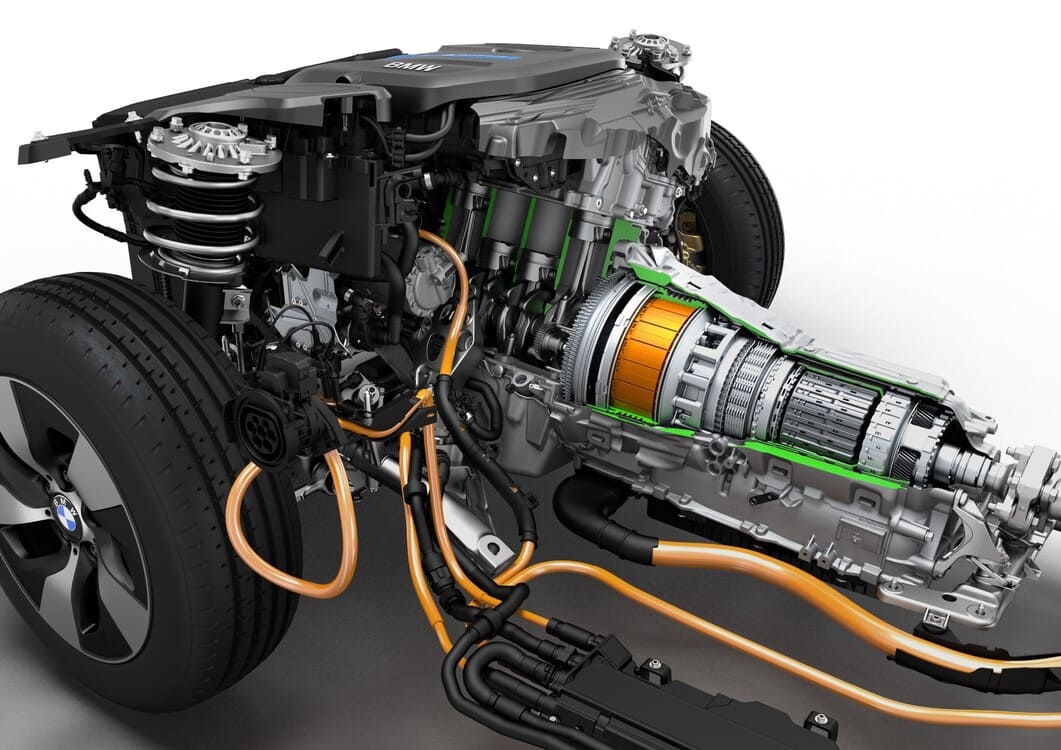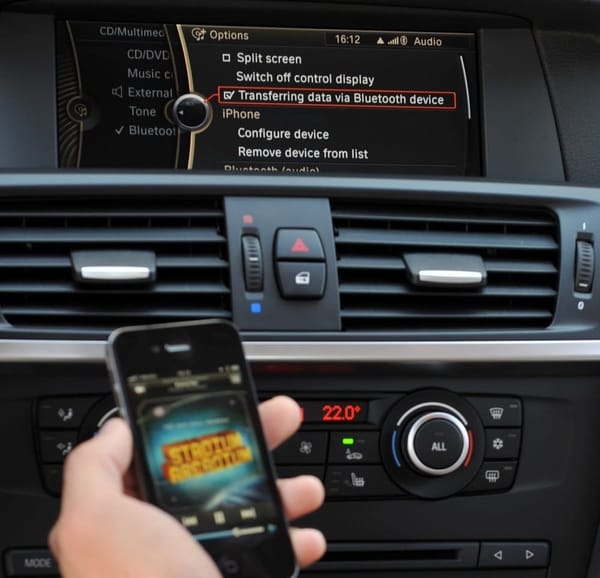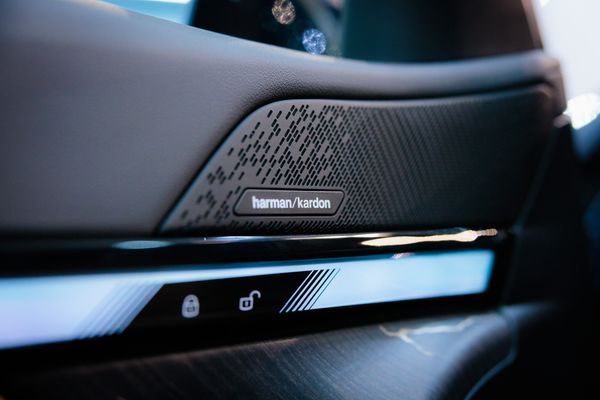Decoding BMW's Enigmatic Message: The Comprehensive Guide to Drivetrain Malfunctions

TL;DR The drivetrain malfunction warning is a general alert from your BMW's computer system that something is amiss within the drivetrain components. To pinpoint the specific issue and understand what caused the malfunction, a diagnostic tool needs to be connected to the BMW's Electronic Control Unit (ECU).
This tool can read the fault codes stored in the ECU's memory, providing more detailed information about the nature of the problem. A qualified mechanic or technician would use this diagnostic tool to identify the specific issues and take appropriate steps to address and fix them.
Ah, the joys of owning a BMW.
The thrill as you navigate those twisty backroads, the envious looks from passersby, and then... the sudden appearance of the "Drivetrain malfunction" message on your dash.
It's like getting a surprise visit from your mother-in-law when you least expect it.
So, what does this ominous message really mean?
In the simplest terms, it's your Bimmer's way of saying, "Hey, something's not quite right between the engine and the wheels."
But before you start hyperventilating and envisioning a hefty repair bill, let's clear the air: Drivetrain malfunctions often sound scarier than they are.
They're typically less severe than their intimidating cousins, the Engine and Transmission Malfunction warnings.
But, as with all things German, it's never just straightforward.
Buckle up, my friend. We're about to dive deep into the heart of your beloved Bimmer and demystify this perplexing message. And who knows? By the end, you might just have a new party trick to impress your car buddies.
Understanding the BMW Drivetrain: More Than Just Gears and Gas
Let's play a little game.
Close your eyes and imagine the intricate ballet happening under your BMW's hood every time you press that accelerator.
From the engine roaring to life, sending power through a series of components, all the way to those rubbery wheels gripping the asphalt – that's your drivetrain in action.
It's like the backbone of your Bimmer, making sure everything moves in harmony.
Fast Facts to Impress at the Next Car Meet:
👉 When that "Drivetrain malfunction" message lights up, it usually points to a hiccup in either the engine or the transmission. Think of it as your car's version of a sneeze.
👉 Get this: if the fault is serious enough, your BMW goes into its version of "self-preservation mode" – the limp home mode. It’s like your car saying, "Alright, I can't sprint right now, but I can surely walk you home."
👉 The range of drivetrain malfunctions is wild. It could be as minor as a hiccup or as major as a heart attack. And the real detective work? It begins with checking the ECU fault memory.
👉 Fun tidbit: If the glitch is mucking about with the emission system, your BMW throws a little bonus warning your way with the check engine light. Because, why not?
👉 And here's a neat trick: To make that pesky Drivetrain Malfunction warning vanish (temporarily, at least), try cycling the ignition off and on. If the glitch was just a passing cloud, the message will clear. But remember, it's like putting a band-aid on a wound – always best to check what caused it.
So there you have it. The drivetrain is your BMW's maestro, orchestrating everything from engine purrs to wheel spins. And while it's a robust system, even maestros can have off days.
The key?
Knowing how to read the signs and act accordingly. Stay tuned as we delve deeper into the diagnostic symphony of your BMW.
Drivetrain Diagnostic Monitoring System: Your BMW's Inner Sherlock Holmes
Ever wonder how your BMW seems to know something's amiss even before you do?
Well, let's pull back the curtain on this automotive wizardry.
Beneath that sleek exterior and luxurious cabin lies a sophisticated network of control modules, each diligently monitoring its respective realm. It's like having a team of tiny Sherlock Holmes inside your car, each with a magnifying glass, searching for clues.
Meet the Control Module Dream Team:
- DME (Engine Control Module): Think of this as the brain of the engine. It houses a virtual engine model, a digital twin of your actual engine, representing peak performance and efficiency. This nifty module oversees engine operations and keeps a close watch on performance.
- EGS (Transmission Control Module): The maestro behind the seamless gear shifts, ensuring your transmission dances in harmony with the engine's tune.
- GHAS (Differential Control Module): Ensuring that the power is distributed just right between the wheels.
- VTG (Transfer Case Control Module): An essential player for those with xDrive systems, making sure your BMW has grip when you need it most.
Now, here's the fun part.
These modules are not just passive observers.
They actively compare real-time data against established benchmarks.
Remember the virtual engine model in the DME? That's the gold standard.
But, given the ever-changing conditions in which your car operates (like that impromptu drag race or the scenic mountain drive last weekend), the diagnostic system grants a bit of leeway. This wiggle room is known as the diagnostic threshold margin.
When Things Go Sideways
A trip down memory lane to 2016 reveals some quirks of this system. A group of BMW M2 aficionados reported their "Drivetrain Malfunction" warning making unscheduled appearances during full-throttle adventures.
The culprit?
A finicky turbocharger control.
The solution?
A software update that tweaked the diagnostic thresholds.
Around the same time, those cruising in N63 V8-powered BMWs noticed the same warning after prolonged gentle drives.
This time, the issue lay in the overly sensitive diagnostic threshold in the DME, which again was resolved with a software patch.
A silver lining to these tales?
A simple ignition cycle often cleared the warning. But, as any detective will tell you, it's always essential to find the root cause.
And when the inner Sherlock Holmes detects something fishy, it dutifully logs a fault code and alerts you via the iDrive and instrument cluster.
Depending on the severity, your BMW might even cut back on the power, much like an overprotective parent.
In the end, while we might be in awe of our BMW's performance and style, it's this intricate diagnostic dance happening beneath the surface that truly deserves a standing ovation.
Immediate Actions When Drivetrain Malfunction Appears: Stay Calm and Drive On (Safely)
Picture this: you're cruising down the highway, singing along to your favorite tune, when suddenly, your BMW throws a curveball with that dreaded "Drivetrain malfunction" message.
It's like the DJ suddenly switching from rock to polka. Jarring, right? But, here's the game plan:
Step 1: Don't Panic
First and foremost, keep your cool. Think of it as your car's way of saying, "Hey, I've noticed something odd. Let's check it out." It's not screaming, "Abandon ship!"... at least not yet.
Step 2: Safely Pull Over
If you're in a spot where it's safe to do so, pull over. Let's give your Beemer a moment. It's like asking a friend, "Hey, you okay?"
Step 3: Restart and Observe
Turn off the engine and take a deep breath. Maybe count to ten or hum that tune you were singing. Now, restart the car. Sometimes, this simple act can clear the message. It's akin to rebooting a misbehaving computer.
A Word of Caution: There's a doppelganger message out there: "Drivetrain: Vehicle cannot be restarted." Now, this one's a bit trickier. While I've often been able to restart cars with this message, it's a gamble. Imagine trying to wake up a teenager on a Saturday morning—sometimes it works, sometimes it doesn't. Proceed with caution and, if in doubt, call for assistance.
Step 4: Assess and Decide
If the warning persists, but everything else feels normal (no weird noises, no smoke, and the car seems responsive), you can probably continue your journey. Just remember: be gentle. It's not the time for spirited driving.
Step 5: Seek Expertise
Regardless of whether the warning disappears or stays, it's crucial to get your car checked at the earliest. These messages are like cryptic texts from a significant other. Sometimes, "We need to talk" just means discussing dinner plans. Other times... well, it's a bit more complicated.
In a nutshell, while your BMW is a marvel of engineering, it's not immune to quirks. Knowing how to respond when it speaks up can make all the difference between a minor hiccup and a full-blown automotive drama.
Deciphering the Malfunction: Reading Out The Fault Memory
Alright, gearheads, strap in. Let's dive into the nitty-gritty of your BMW's fault memory. Think of it as your car's personal diary, where it jots down any hiccup, big or small, in its system.
And just like you'd turn to a diary to uncover a friend's secrets, we turn to the fault memory to understand what's irking our Bimmer.

The Diagnostic Toolbox:
- Diagnostic Scanner: This is like the stethoscope of the car world. It listens to your car's heartbeat and deciphers the rhythm. By connecting this device, technicians can pull up the fault codes and get a clearer picture of the issue.
- Smartphone App: In today's digital age, there's an app for almost everything, including reading your car's fault memory. While I wouldn't rely on it for major repairs, it can give you a quick glimpse into your BMW's mood.
Case in Point: Turbocharger Control Malfunction
Imagine you're out on the open road, and suddenly your BMW feels a tad sluggish. You notice the "Drivetrain Malfunction" message, and after a quick scan using a diagnostic app, you find out it's a turbocharger control issue.
The good news?
You can still drive, albeit with reduced power.
Cycling the ignition might even give you back some of that lost oomph, at least temporarily.
The Future is Remote: ISTA BMW Diagnostics (RITA)
Now, here's where things get sci-fi cool. Some dealers and technicians can run remote diagnostics.
Picture this: you're on a road trip, miles away from civilization, and that pesky warning pops up.
With RITA, they can virtually check your car, reading fault codes in mere minutes. It's like having a mechanic right there with you, minus the overalls and grease.
A few caveats, though: This remote magic trick works primarily for BMW models equipped with iDrive 4 and later (from 2014 onwards) and requires an active Teleservices subscription. Also, availability might vary depending on your location.
In a Nutshell: When your BMW murmurs its grievances through the "Drivetrain Malfunction" message, the fault memory is your Rosetta Stone. It decodes these murmurs into actionable insights.
Whether you're a DIY enthusiast with a smartphone app or prefer the expertise of a seasoned mechanic, the key lies in understanding and addressing the message promptly. After all, a happy car equals happy travels!
Most Common Causes of Drivetrain Malfunctions: Unmasking the Usual Suspects
Let's venture into the rogues' gallery of common culprits behind those unnerving "Drivetrain Malfunction" messages. Knowing these offenders can save you from premature gray hairs and unnecessary pit stops.

1. Turbocharger Boost Control:
- The Scoop: Especially prevalent in N54 and N55-powered BMWs, these turbocharger issues have been causing a ruckus since their debut in 2006. From "charge-air pressure too low" to its opposite twin, "charge-air pressure too high", these faults can be finicky.
- What It Feels Like: It's as if your BMW suddenly caught a cold. The engine runs smoothly, but there's a noticeable dip in pep, almost halving its horsepower.
- Behind the Scenes: When the boost pressure strays from the DME's safe zone, it's like your BMW throwing its hands up in the air and saying, "I'm out!" It shuts down the turbochargers, ushering the engine into its safe, limp-home mode.

2. Misfires (Single or Multiple):
- The Scoop: A misfire is essentially an engine's hiccup. It occurs when the explosive combustion doesn't ignite on cue.
- The Culprits: Everything from leaky injectors, worn-out ignition coils, and spark plugs to vacuum leaks and intake valve compression loss can be to blame.
- Behind the Scenes: The DME plays detective here, monitoring each cylinder's performance. If a cylinder is slacking off, causing the crankshaft to slow down, the DME flags it. Depending on the severity, it might even bench the affected cylinder to prevent damage.

3. Low Fuel Pressure:
- The Scoop: Think of this as your BMW being a tad dehydrated. A drop in fuel pressure can cause both fuel pressure and misfire fault codes.
- The Culprits: A faulty pressure sensor is a common villain, but sometimes the high-pressure fuel pump (HPFP) is the real traitor, especially if it's worn out.
- Behind the Scenes: All direct-injection BMW gasoline and Diesel engines have both low and high-pressure fuel pumps. When issues arise, it's like your BMW gasping for breath, trying to keep the engine running.

4. Emission Control System:
- The Scoop: While these issues often masquerade behind the check engine light, they can sometimes cause a drivetrain malfunction without affecting emissions.
- The Culprits: From a failing NOx catalytic converter to clogged particulate filters, these are system glitches that might lead to bigger problems if left unattended.
- Behind the Scenes: These malfunctions can eventually wear out components and compromise the emission control system. It's like a ticking time bomb, and the sooner you address it, the better.

5. Transmission Problems:
- The Scoop: Both manual and automatic transmissions can throw a wrench in the works, leading to drivetrain malfunctions.
- The Culprits: For manual transmissions, it could be a slipping clutch or even a broken drive shaft. Automatic transmissions have a more convoluted list, ranging from low oil levels to issues with hydraulically actuated clutches.
- Behind the Scenes: The DME plays Sherlock here, comparing engine output speed with wheel speed. Any discrepancies, and it raises the alarm.
In Essence: While these are the usual suspects, the world of drivetrain malfunctions is vast and varied. But understanding these common culprits can give you a head start in diagnosing and addressing issues.
Remember, knowledge is power, and in this case, it can also be the key to keeping your BMW purring smoothly on the open road.
In Conclusion: Navigating the Mysteries of the Drivetrain Message
Ah, the enigmatic world of the "Drivetrain Malfunction" message. Much like trying to understand the plot twists in a telenovela without subtitles, it's filled with drama, suspense, and a touch of confusion.
But here's what we've gleaned:
The "Drivetrain Malfunction" warning, in all its vagueness, is like your BMW's cryptic text message in the middle of the night. It could mean anything from "I just felt like saying hi" to "We really need to talk."
The severity could range from a simple software glitch to a more serious mechanical hiccup that's a wallet's worst nightmare.
But before you go down the rabbit hole of worst-case scenarios, remember this: every problem has a solution.
The key lies in understanding the message, seeking expert advice, and addressing the issue promptly. Much like in life, a proactive approach can save a lot of heartache (and in this case, potential repair costs).
So, the next time your BMW decides to communicate in riddles with a "Drivetrain Malfunction" message, take a deep breath. Armed with the insights from this guide, you're now better equipped to navigate the complexities and keep your beloved Beemer running smoothly.
After all, every relationship, including the one with your car, requires a bit of patience, understanding, and timely care.
Safe driving, fellow BMW aficionados! 🚗💨





